Insect and Related Pests of Foliage Plants
Fungus Gnats
Fungus Gnats
Foliage growers and retailers frequently become concerned about tiny "black flies" which can become abundant under greenhouse and indoor plant growing conditions. These flies often are fungus gnats and represent a potential thereat to plants. A key (Fly ID Key) for identification of flies, including fungus gnats is available.
Adult fungus gnats are slender with comparatively long legs and antennae. They are grayish-black and about 1/8 inch long (2.5mm). The adult (Figure 1) is a weak flier and is most visible near or on the soil surface or under leaves. Small yellowish-white eggs (Figure 2) are deposited on the soil surface. The immature legless larva (Figure 3) has a white to clear body with a shiny-black head and when fully grown is about 1/4 inch (5.5mm). This stage lives in the soil. The larva develops into a pupa (Figure 4) in the soil, which is white but darkens as it matures. The larvae have been associated with feeding on and decay of plant roots and lower stem tissues (Figure 5). Highly organic soils of high moisture content appear to enhance infestations, especially in the presence of decaying plant tissue. Feeding may be particularly injurious to seedlings, rooted cuttings (Figure 6) or young plants. Symptoms first become apparent when plants begin to wilt or develop an unhealthy appearance. Dark-winged fungus gnat adults are usually noticed before injury caused by the larvae is apparent.
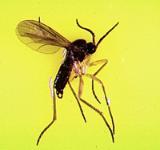
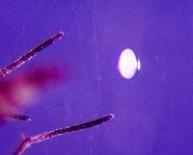
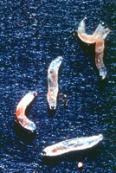
From left to right: Figure 1, Figure 2 and Figure 3.
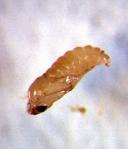
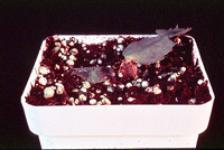
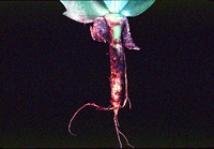
From left to right: Figure 4, Figure 5 and Figure 6.
